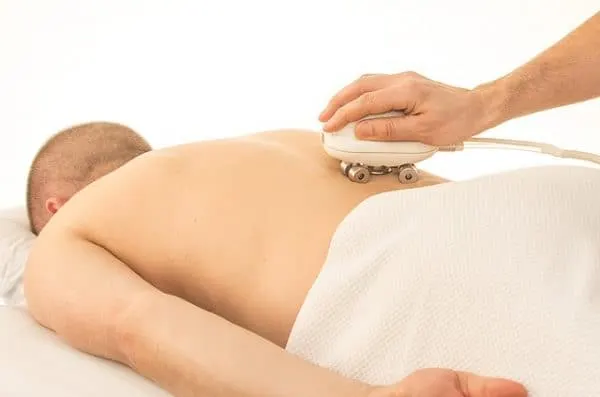
Can you actually buy a night’s worth of healthy sleep? Most marketing strategists and representatives from orthopedic pillow stores will tell you that good sleep can indeed be bought. They are not exactly wrong—comfortable mattresses and pillows are essential if you want to get a proper rest—but what fundamentally decides the quality of your sleep isn’t something you can buy. After all, the solution is in the way you choose to sleep and that can depend only on you.
Contents
- Is Your Sleeping Position Important?
- Best Positions for Healthy Sleep
- Sleeping on Your Back
- Sleeping on Your Side
- Which Sleeping Positions Are Bad for You?
- How to Adjust to a New Sleeping Position?
Is Your Sleeping Position Important?
Turns out, yes, it is.
Consider for a moment that humans spend roughly one-third of their lives sleeping. Now with that in mind, consider that during sleep our bodies retain a chosen position throughout the night.
Of course, some people move around more than others, and all of us tend to fidget more under stress. So it doesn’t come as a surprise that your position plays a big part in the quality of your sleep.
Even if you get enough hours, it’s the way you sleep that can substantially improve or worsen your health. This means that your sleep position can affect blood circulation, determine the amount of pressure on your back or internal organs, and even reduce heartburn and acid reflux.
Best Positions for Healthy Sleep
It’s safe to say that there aren’t many options when it comes to healthy sleep positions, and even the ones that are recommended by experts come with their pros and cons.
So, according to restfaq.com, when choosing a new sleeping position, try to consider what’s best for your body and how it might affect any pre-existing conditions that you have.
Keep reading to learn about best sleep positions and their benefits proven by medical experts and scientists.
Sleeping on Your Back
Back sleeping might not be everyone’s favorite position, though it’s arguably the healthiest option available.
With the right pillow arrangement, your neck and spine are evenly aligned into a neutral position, which can reduce pressure on your joints.
Back sleeping also keeps your skin fresh, preventing wrinkles and sagging. Additionally, in this position your spine and back muscles act as a buffer, minimizing pressure on your internal organs.
To get the most out of sleeping on your back, it’s important to choose the right pillow to make sure you’re properly supported.
With the pillow placed just above your shoulder blades, your head and neck should be evenly aligned with the rest of your body. If a pillow is too tall, it can tilt your chin too close to your chest and put unnecessary strain on your neck.
But if you deice on a pillow that’s too thin, you are forced to tip your head back rather unnaturally which can also increase pressure on your vertebrae. The best way to alleviate lower back pain is to put a small pillow under your knees, slightly elevating the legs above the body line.

People with scoliosis can put a small roller under the lower back
Back sleeping isn’t recommended for pregnant women, especially during the last trimester when the uterus is known to obstruct blood circulation by compressing the inferior vena cava.
People who struggle with snoring and sleep apnea should also refrain from sleeping on their back as it can worsen the condition.
Other than that, sleeping on your back offers long term benefits, from reducing the pain in your neck and spine to lowering the risk for diseases of internal organs as well as improving your skin condition.
Sleeping on Your Side
According to experts, the best sleeping position during pregnancy is on your side. But which side is best for you? Well, that depends on the needs of your body.
People with any pre-existing heart condition and asthma are advised against sleeping on their left side to avoid putting extra pressure on the chest which can worsen the condition. Alternatively, sleeping on your left side is beneficial for digestion and can reduce heartburn.
When it comes to sleeping on your right side, the exact opposite is true. Those who suffer from asthma and heart diseases should choose this position, while people with digestive disorders should keep to the other side.
To get the most out of sleeping on your side, remember to lie down with your back straight and your knees slightly bent. For extra support, you can tuck a small pillow between your knees which can help align your hips and prevent back pain.

If you use a special anatomically shaped pillow, there is no need for an extra pillow for your legs
Which Sleeping Positions Are Bad for You?
Certain sleeping positions should be avoided whenever possible and without exception:
On your stomach
This position can result not only in pain and stress for your neck and back, but also cause the sagging of skin and premature wrinkles.
Sleeping on your stomach means twisting your neck to the side and stretching your spine unnaturally which leads to all kinds of soreness and back pain. And on top of that, your internal organs become more vulnerable to pressure compared to what you experience sleeping on your sides or back.
That said, this position is one of the best for reducing snoring and sleep apnea.
Sitting up
Whether you end up falling asleep at your desk or during the daily commute doesn’t really matter as far as your body is concerned.
The main issue of sleeping in this position is the pressure put on the intervertebral discs which can lead to all kinds of spine disorders, not to mention that sitting for a long time causes swelling and numbness in your legs and feet.

You won’t feel well-rested after sleeping while sitting up, so try to catch some shut-eye in bed whenever possible.
Fetal position
This position is actually not that bad nor unhealthy, but experts note that keeping your back unnaturally curled for long periods of time can result in lower back pain.
Instead, it’s recommended to sleep on your side with your body stretched out and knees slightly bent.
How to Adjust to a New Sleeping Position
Adjusting to any change is no small feat and requires patience and time, especially when it comes to altering your sleeping habits which can be difficult for your body to get used to.
But if you are ready to enter a brand new world of sleeping bliss, here are some tips to help you make the transition period an easy and pleasant experience:
- Go to sleep while feeling tired. Even though it might sound obvious, this simple tip works wonders. You’ve probably noticed yourself that it’s possible to fall asleep anywhere and in any conceivable position when you’re downright exhausted. Even five or ten minutes should be enough to knock you out. Admit it, it’s really hard to overthink earthly comforts when you’re dead on your feet.
- Don’t get fixated on the sleeping position. Most of us find it hard to keep track of our running thoughts while we’re already in bed. The mind tends to wander, and it’s easy to get lost in it. So let it wander. If you keep obsessing over the right position to sleep in, you won’t get any sleep at all.
- Try gradually relaxing your body. Getting used to a new position can make you rigid and tense. To get rid of the tension, try to concentrate on each part of your body that carries this strain. First start with your calves, then the hips, then move to your stomach, your back and arms, and finally your neck. As soon as you zero in on the tension, it will dissipate.
- If your body simply refuses to retain the new position, try to make the transition even more gradual. For example, if you’re used to sleeping on your stomach but want to train yourself to sleep on your back, begin the transition by turning your body little by little every night while facing the ceiling. At first you will be able to sleep on your side and then eventually you will switch to your back with your body fully stretched out.
Remember, choosing the right hours and a better sleep position can improve your health in unexpected ways, so don’t underestimate the power of sleeping habits. If you think you might benefit from changing your routine, go for it!
Do what feels best for your body.
- Sagittarius Man & Gemini Woman Love and Sex Compatibility - January 31, 2024
- Taurus Ascendant Rising Personality Traits in Men (Guide) - January 31, 2024
- How to Seduce and Attract a Sagittarius Man (Seduction Tips) - January 31, 2024
